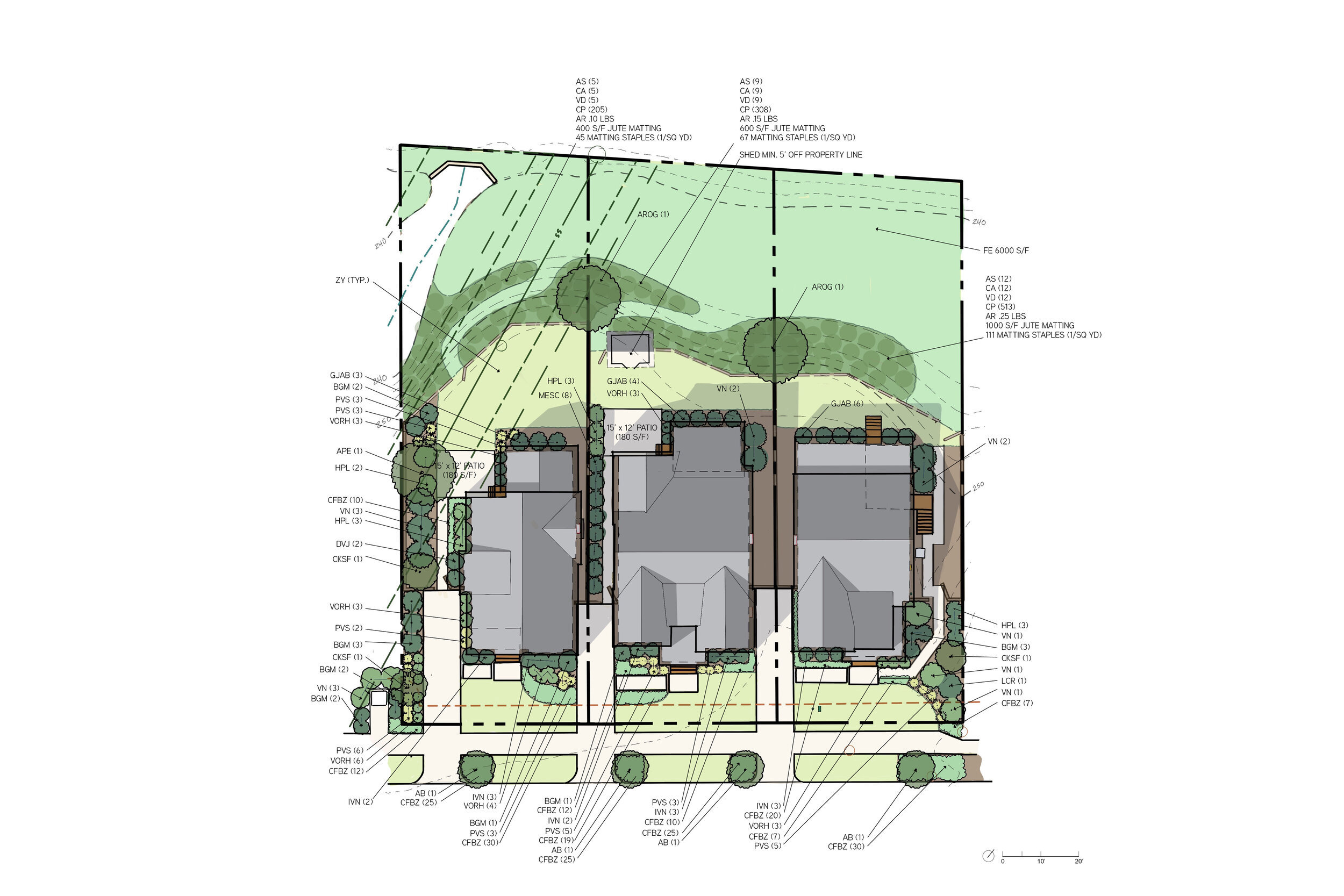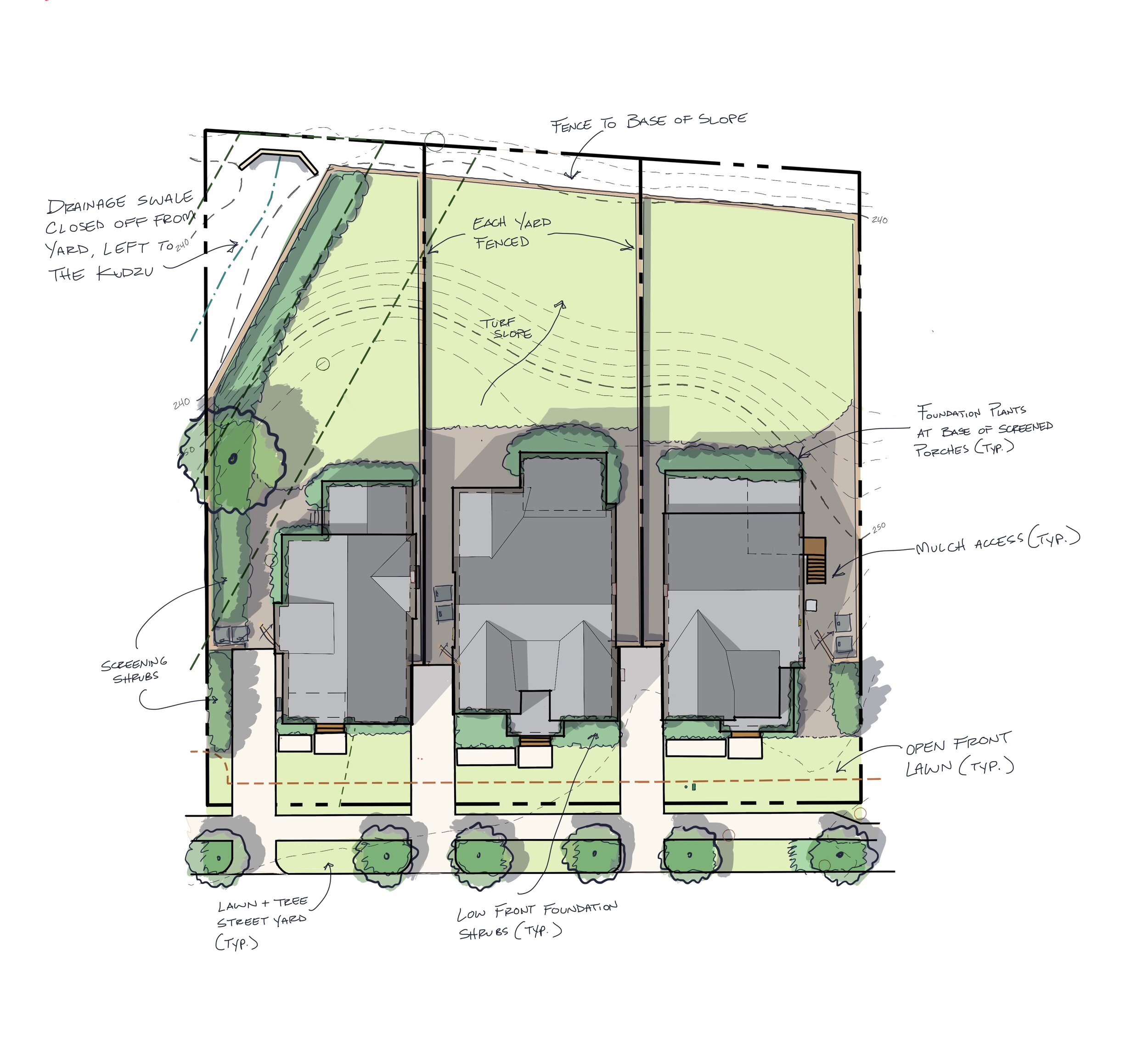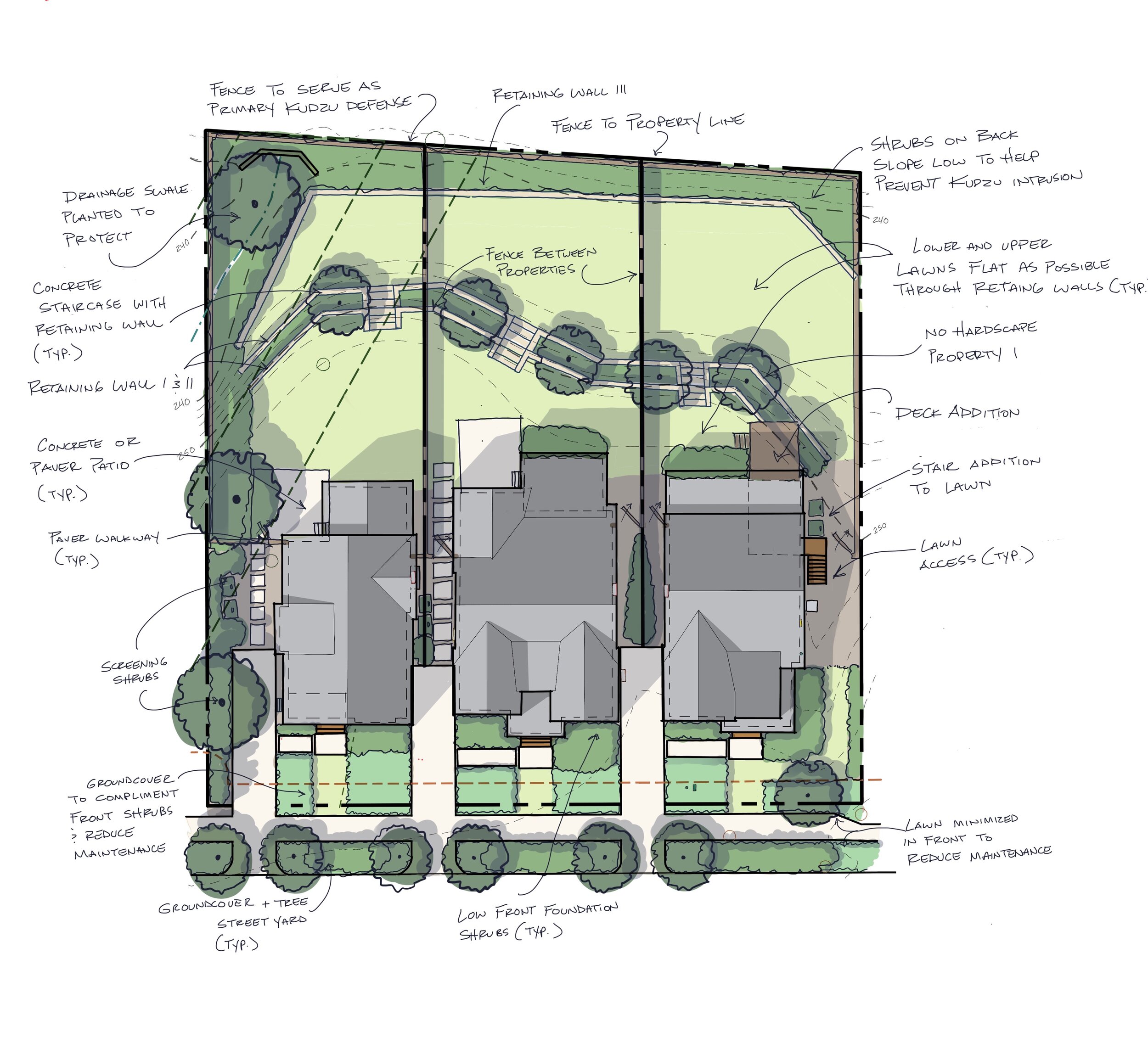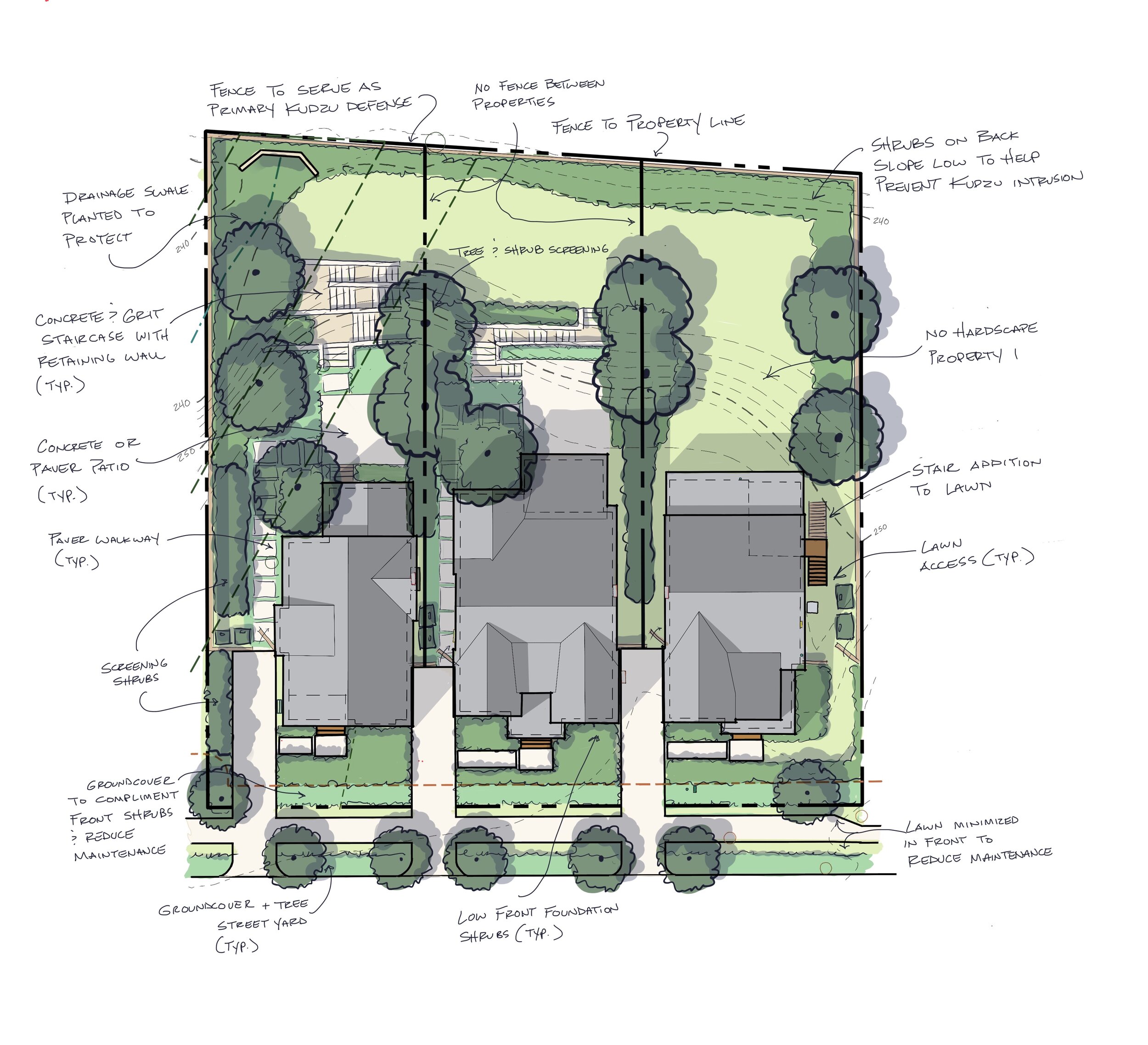Courtland Collection
Nestled into Mordecai, one of Raleigh, North Carolina’s most charming historic neighborhoods, rises a small enclave of houses known as the Courtland Collection. Developed by Merge Capital, this 1/2 acre pocket development features three single family homes overlooking private, sunken back yards with a views into Raleigh. Merge Capital sought to create environments around the houses that not only accentuated their style, clean and contemporary with a bit of historic charm, but which also tackled some legacy challenges in the landscape surrounding the property.
The Courtland Collection provides the historic Mordecai neighborhood a new precedent for density while celebrating the neighborhood’s characteristic architectural diversity. Additionally, the landscape surrounding the homes exhibits traditional foundation planting with slope plantings based on ecosystem restoration practices. Image courtesy of the Courtland Collection.
Intimate gardens were specified to grace the foundations of the homes, accentuate moments of transition in the architecture, and provide screening to disrupt views into neighbor’s properties without blocking opportunities to “chat through the hedge”. Plants specified immediately around the houses were chosen for their ability to evoke planting trends popular when Mordecai was established in the nineteenth century. These trends, popular across the Southeastern United States, are drawn not only from French and English estate styles of the time, but also feature Asian plants (hydrangea, azalea, camellia, etc.) that were used to advertise status at a time when expeditions and plant collecting from around the globe were enterprises of the wealthy and powerful.
Referencing Courtland Collection’s style of historic charm with clean and contemporary architecture, strict bed lines and orderly hedges are animated with diverse native plantings that soften the edge of the contemporary architecture and stabilize challenging conditions in the landscape.
Among the landscape challenges tackled across the Courtland Collection are slopes enclosing both sides of the sunken back yards. Designing access and plantings from the homes down to the sunken backyards, as well as strategies for managing steep slopes from the backyard up to railroad tracks opposite the homes was a paramount consideration for creating a livable environment for Courtland’s homeowners. Several iterations were developed in studio working out the safest, most pleasurable way to get from back porch down to backyard, which in some cases was a difference in elevation of 15’ across 10’ of distance. Stabilizing the slopes became the work of native plants identified in the area as naturally occurring on road embankments and elevated railroad tracks.
Rough grading of the Courtland Collection before installation of access from front to sunken back yards. Slopes will be planted with a mix of native shrub, forb, and grass species identified locally on road embankments and installed at a density that will prevent erosion immediately.
Furthermore, because irrigation was not included as part of the development of Courtland, plants across the property were matched with soil and stormwater flow conditions present in their specified habitats. For relatively flat habitats around the foundation of the homes, rich soils, deep mulches, and micro-swale bed lines were installed to keep plants chosen primarily for aesthetic features, but coming from far-flung parts of the world, with the moisture retention properties necessary to survive increased temperatures radiating from reflective surfaces such as the house, street, and front lawns. By contrast, slope plantings in the backyard and along a creek intercepting the property received minimal soil amendment and mulch and were vigorously planted with native shrub, forb, and grass species that tolerate drought while rooting in and spreading quickly to not only stabilize the slope but prevent wash of soils and mulches into Raleigh’s streams.







